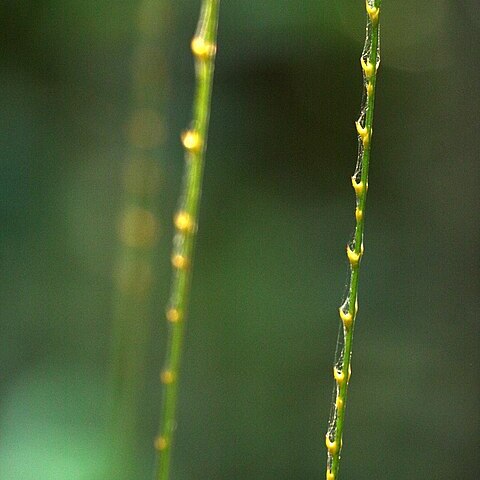Clustering climbing palm to 35 m tall; stems 20–25 mm diam. Leaves ecirrate, to 2 m long; leaf sheaths flagelliferous, with dense needle-like brown spines to 10 cm long, randomly arranged; petiole 5–15 cm long, spiny; rachis flat adaxially, spiny. Pinnae 12–25 each side of rachis, regularly arranged, linear-lanceolate, to 30 cm long, to 30 mm wide, acute to acuminate or filiform, laxly papyraceous, dark green adaxially, lighter green abaxially, with prominent midrib. Staminate and pistillate inflorescences to 5 m long; lateral branches sparse, distichous, to 50 cm long. Staminate flower to 6 mm long. Pistillate flower to 4 mm long. Fruit globose, to 15 mm diam., cream to pale-brown.

